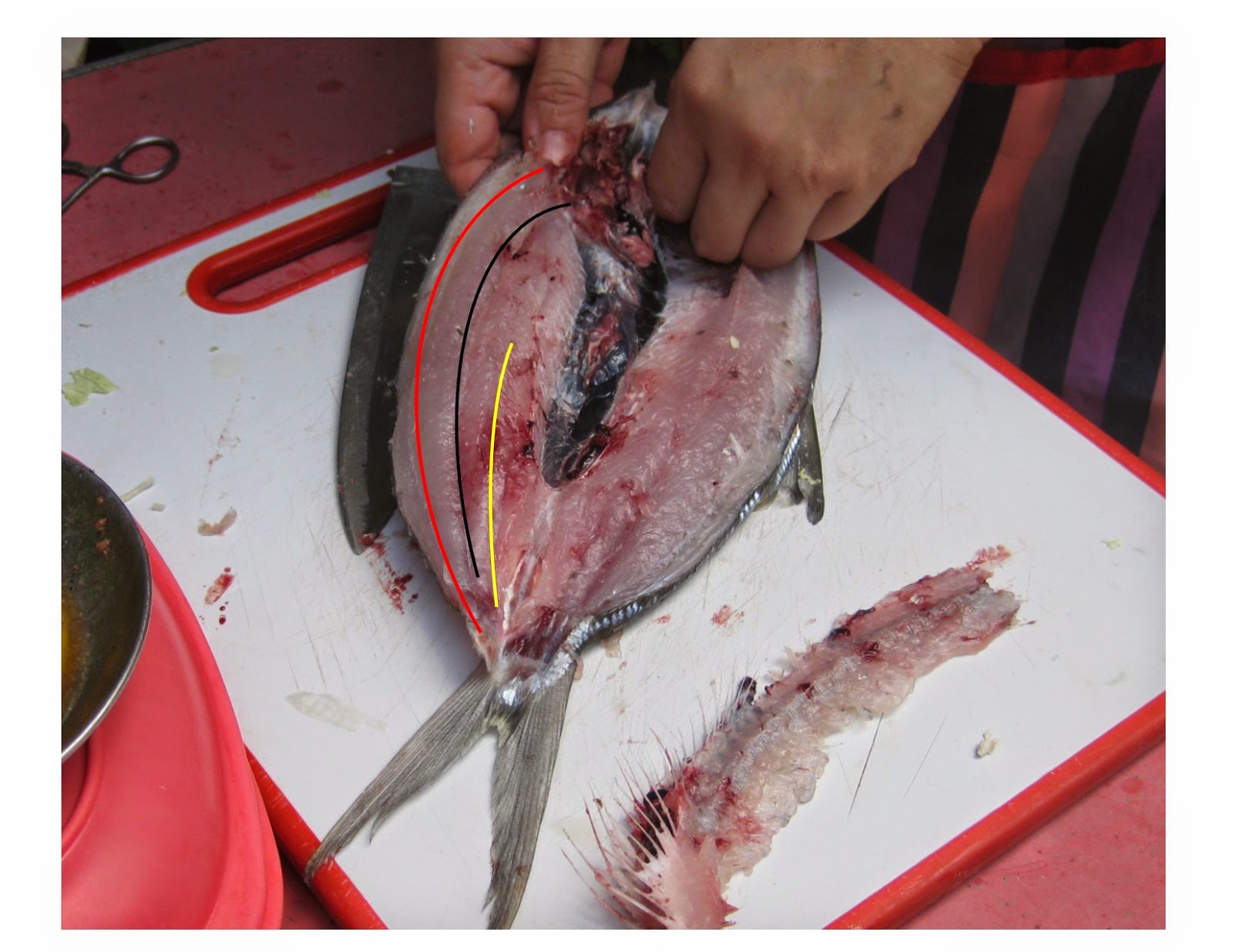Bangus or milkfish is the national fish of the Philippines. It has firm meat but has more bones than the other edible fishes. The sizes range from 4 inches to 1 meter in the market. The bigger fishes are called "Sabalo" or Mother bangus and are prohibited from being taken because they are the ones that spawn. The sizes that can be seen in the markets are up to 15 inches at the most. The bangus is fresh if the eyes are very clear, the scales do not easily separate from the skin, the gills are very red and the meat is very firm with no off smell.
It is very common here in the Philippines to find boneless bangus in both the supermarket and wet market because the people like to eat the fish not worrying about the bones getting stuck in the throat. It is quite easy to debone a bangus once you get the hang of it. All you have to have is a very sharp knife and surgical forceps, I used mosquito (I believe) forceps, the size I don't know but buy a small thin ones. The first time I tried deboning a bangus, I had a hard time and it was evident that I was not yet very good at it because not a lot of meat remained in the fish, almost all got stuck in the bones. The more practice you do, the more perfect your fish will come out. So let's begin!
Instruction:
To debone a bangus the cut must be made in the dorsal side of the fish or the upper part. Let the dorsal fin be your guide in cutting. Pierce the skin of the bangus on the side of the dorsal fin using your very sharp knife. Make sure that the blade cuts as close as possible to the back bone to get the most out of the meat of the fish. Run through the back bone and split the head in the middle. Do not cut through the ribs and the tail. Do the same way on the other side.
Carefully detach the backbone from the head of the fish. Slowly pull the backbone including the ribs from the body of the fish.Remove the gills and innards of the fish.
The small bones in the bangus seem complicated if you are eating it but actually has a systematic pattern. The black line has the fewest bones having a series of single strand bones attached were the ribs were. The yellow line has a series of single strand bones thick the the ones in the middle. The red line contains the most bones there is. Before you start taking off bones from the meat, I suggest that you run the tip of your knife along the lines to help ease out the bones but do not cut through the bones because if you do you might not be able to see them and get them removed. You will see a faint line across the meat of the fish approximately where I put the lines in the pic. These lines will guide your where yo run the blade of your knife.
Insert the tip of your forceps in the line that you made. Carefully ease out and pull out the meat. If you are just starting to do this, it is important to hold on the meat to prevent the meat from coming out with the bones. If you do not do this, there will not be much meat left in the bangus.
After your done with the deboning process, you can now put the spices that you desire.
For "Daing na Bangus", just drizzle it with vinegar. Put crushed garlic, salt and ground black pepper. Marinade more at least 2 hours. Keep in the freezer until your ready to fry it!
















































